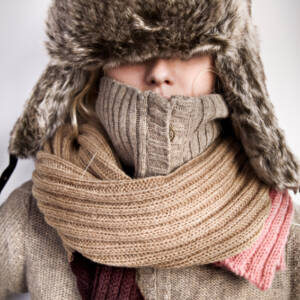Arthritis can affect people all through the year, however the winter and wet weather months can make it harder to manage the symptoms.
The cold and damp weather affects those living with arthritis as climate can create increased pain to joints whilst changes also occur to exercise routines.
Many arthritis sufferers claim they can predict rainfall due to the level of pain in their joints. A recent study conducted in the US explains why. The study focused on patients with chronic pain, surveying if individuals feel an increase in pain when changes in weather occurs.
“67.9 percent of the people surveyed responded that they were sure changes in the weather had an effect on their pain. Most of the patients reported that they can feel a change in their pain before rain or cold weather occur,” said Robert Jamison, Professor at the Harvard Medical School and chief psychologist at the Pain Management Center at Brigham and Women’s Hospital, Chestnut Hill.
Jamison revealed however that the factor that may be responsible for increased pain is not snow, cold or rain, but actually, a change in barometric pressure. Barometric pressure (atmospheric pressure) is the force exerted onto a surface by the weight of the atmosphere at any given point. As a storm system develops, the barometric pressure begins to drop.
Jamison explains the impact of barometric pressure on the body through a test conducted with a balloon. “When a balloon is inflated, it has the maximum inside and outside pressure. High barometric pressure that pushes against the body from the outside keeps tissues from expanding.” As the barometric pressure falls, tissues in the body may expand. As the tissues expand, they put more pressure on nerves that control pain signals.
“It doesn’t take much expansion or contraction of tissue to affect a pain trigger,” Jamison said. Therefore even individuals who live in drier climates also reported feeling more pain with weather changes.
So, what to do to prevent the aches and pains?
During winter dressing warmly is the key. Paying special attention to the head, hands and feet, as majority of heat is lost from the body’s extremities. Some helpful winter dressing tips include:
- Wear loose layers when going outdoors. Layers traps body heat to keep you warm.
- Wear mittens or gloves to protect your hands.
- Wear a hat or beanie to protect your head.
- Wear a scraf to protect your neck.
- Wear socks and waterproof boots to avoid getting feet wet or damp.
The cold and damp weather can also cause changes to people’s exercise plans. We have an instinct during winter to hibernate; however, a lack of physical activity will cause joints to become stiff. Exercise eases arthritis pain. It increases strength and flexibility, reduces joint pain, and helps combat fatigue. To manage arthritic conditions during the cooler months, individuals need to plan physical activities that are easy to do during winter, such as:
- Walking indoors, such as around shopping centres
- Household chores, like vacuuming
- Playing with children
- Swimming indoors, such as Hydrotherapy
- Taking an aerobics or yoga class
- Listening to music and dancing
- Using the stairs instead of the elevator
- Stretching or doing light exercises while watching TV
Exercise doesn’t have to be boring. Anything that keeps you moving works.
So when your joints start to warn you of miserable weather ahead, plan a warm routine of indoor exercise, rustle up your cosy clothing, or book yourself a two month holiday to a warmer destination!




